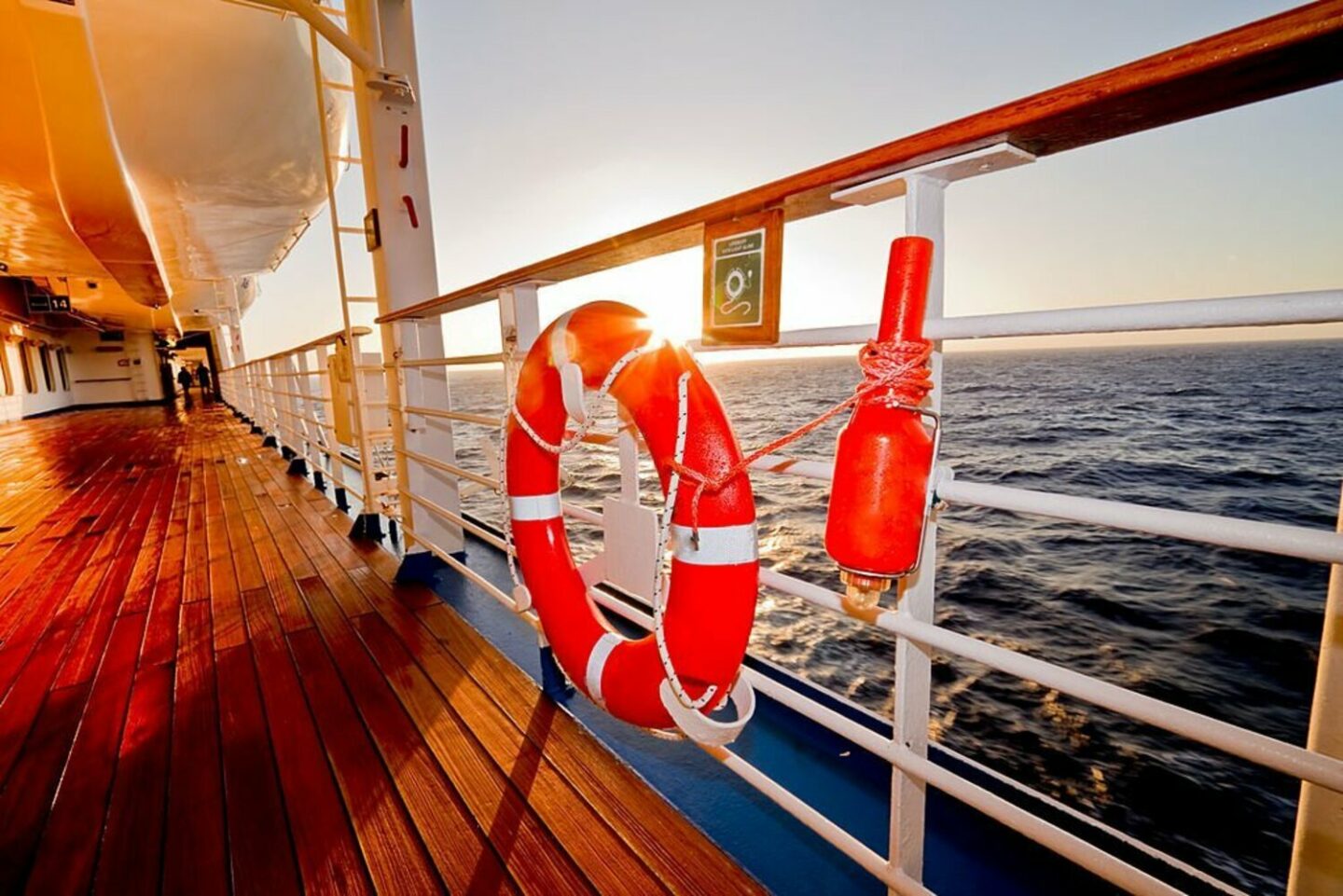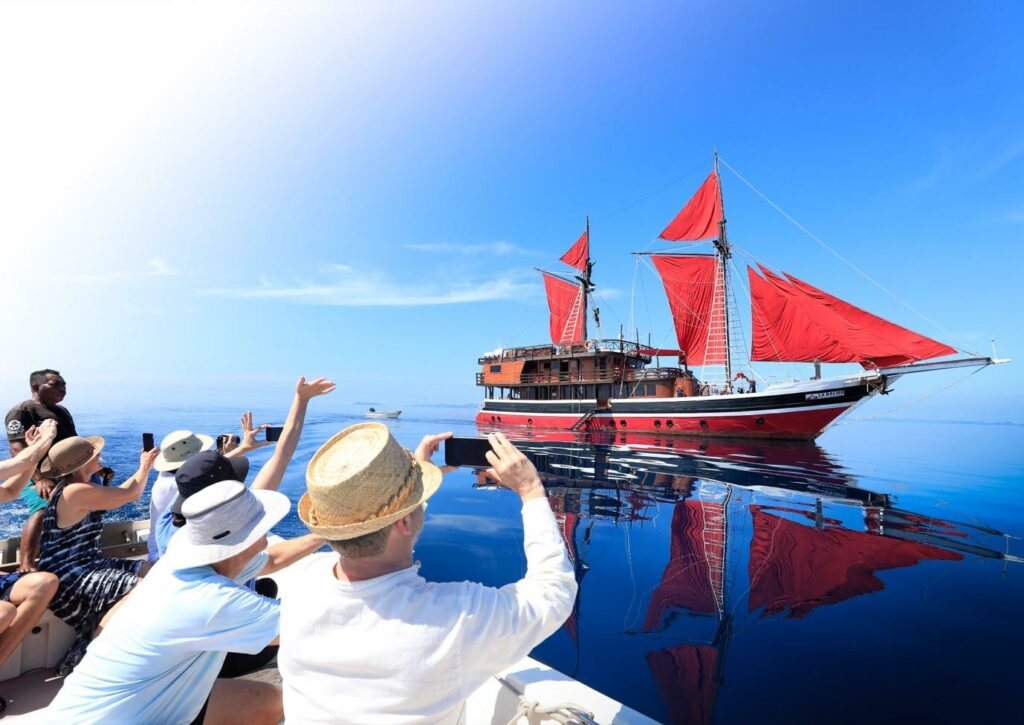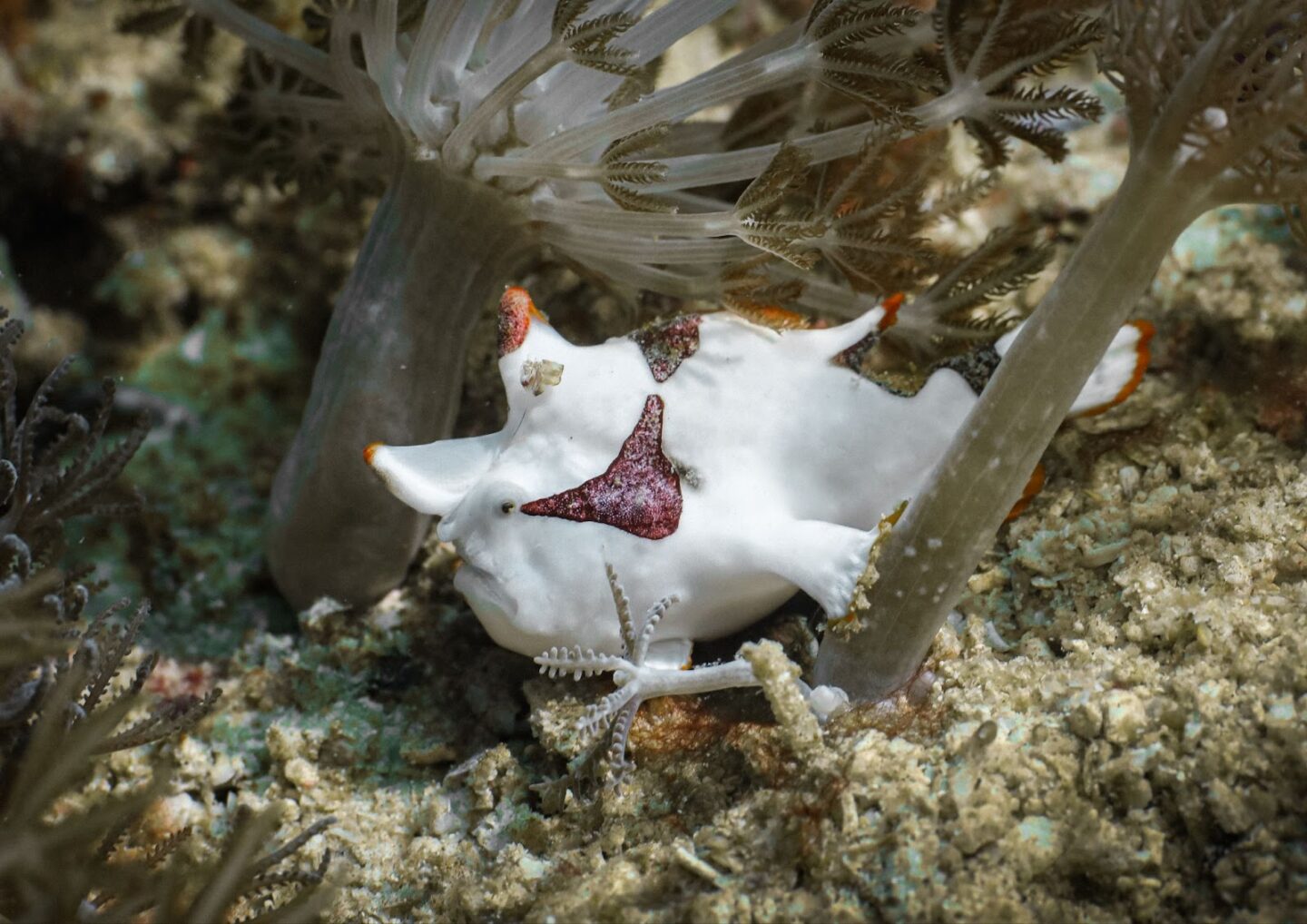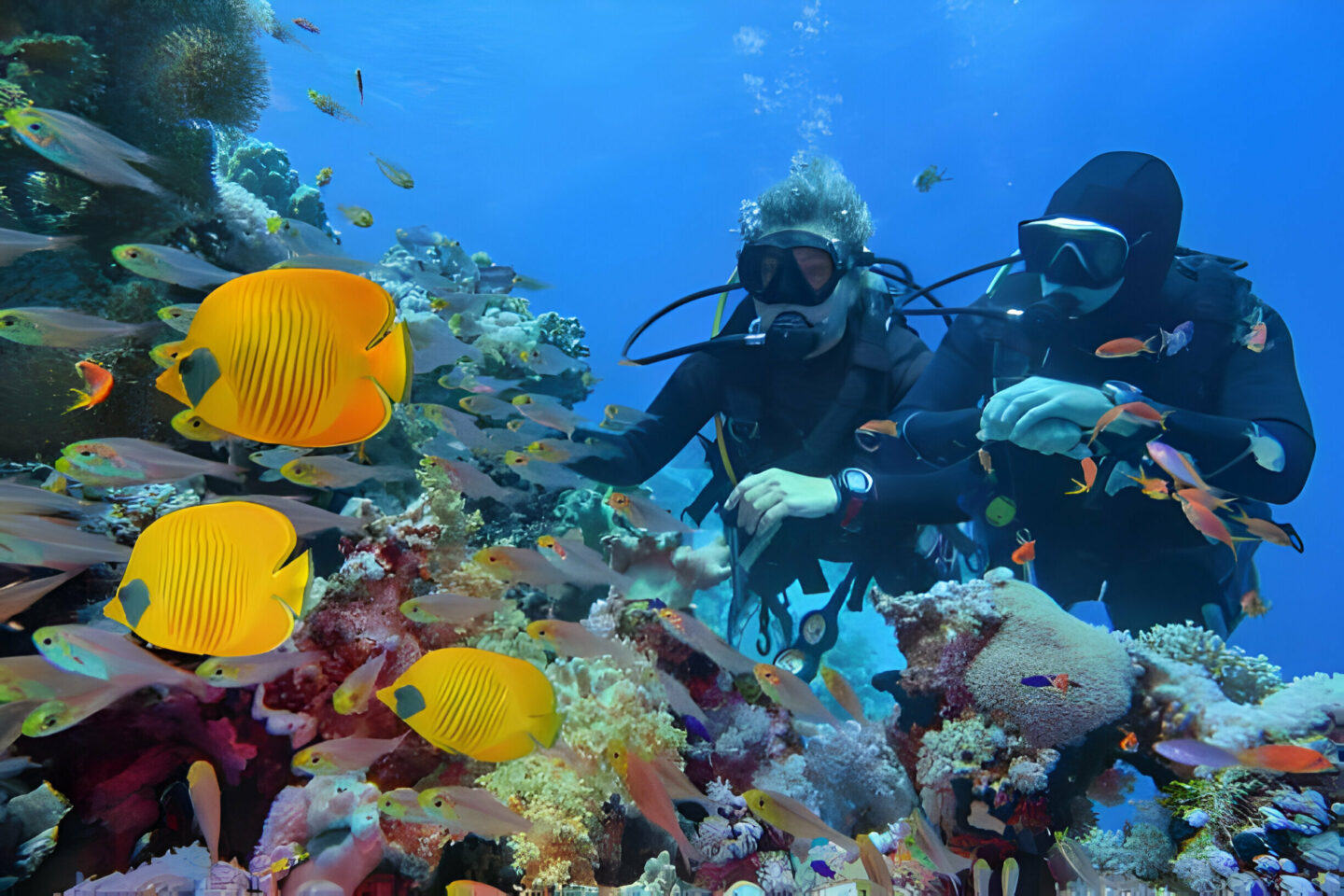Trimix Diving: The History, Purpose and Percentages of Each Gas
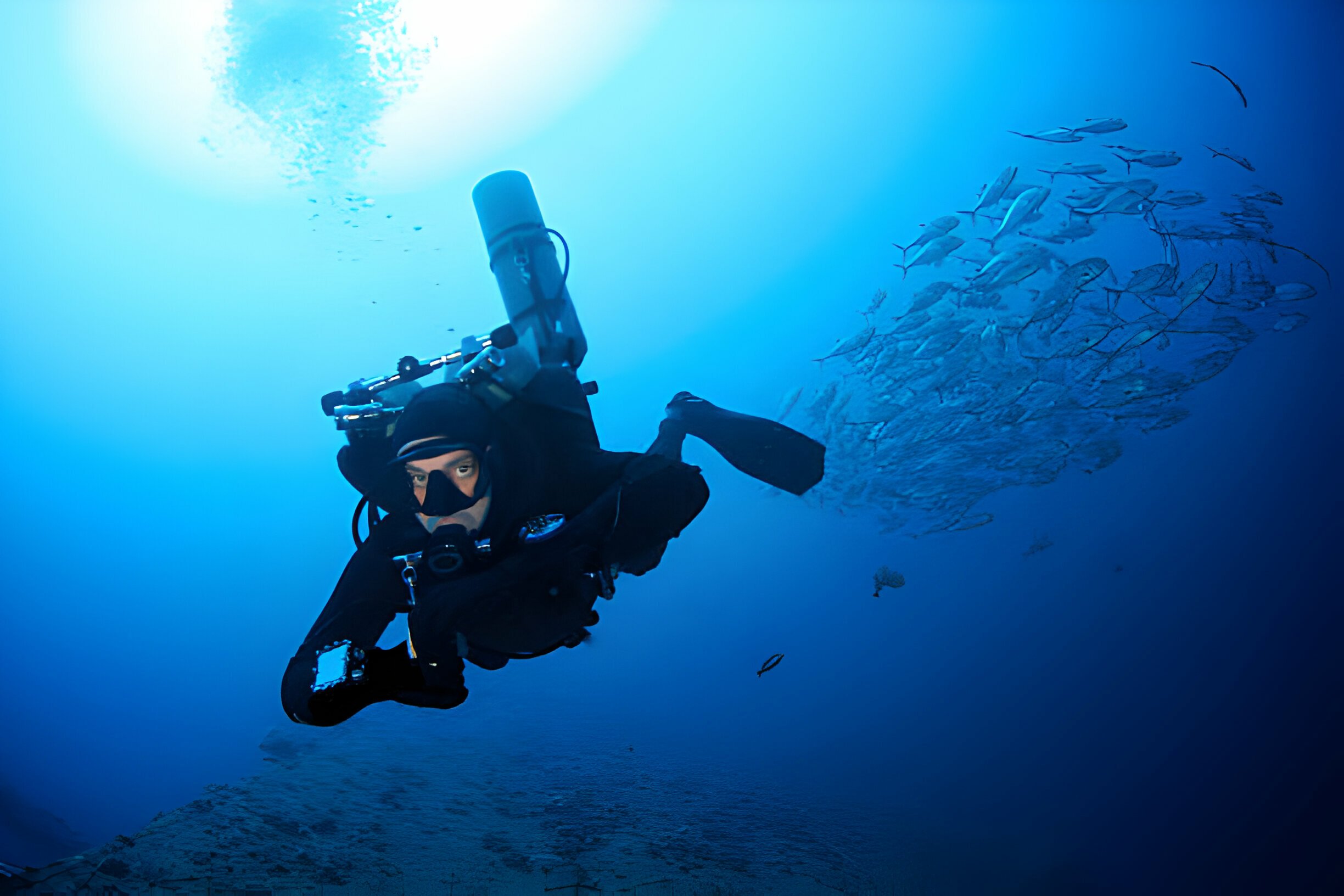
Trimix is a gas blend consisting of helium, oxygen and nitrogen. It allows divers to explore depths that were once considered unattainable. The specific ratio of these three gases depends on the depth of the dive. In this overview we will delve into the aspects of Trimix diving so that you can make an informed decision, about its suitability, for your technical diving endeavours!
Trimix refers to a gas mixture that combines proportions of oxygen, nitrogen and helium used to explore depths. A diver can safely explore depths of 300 feet (90 metres) or even deeper. However, before attempting diving, it is very important to obtain Trimix diving certification and use equipment that is compatible with Trimix diving, such as a dive computer. While most recreational diving equipment can handle Air Nitrox mixes, they may not be suited to handling Trimix.
You will need to adjust the oxygen and nitrogen levels while increasing the proportion of helium. These adjustments help prevent nitrogen narcosis and minimise the risk of oxygen toxicity. The exact calculations required in determining the percentage are quite complex and complex.
For diving using Trimix, the gas mixture generally consists of 44% nitrogen and 21% oxygen. Next about 35% helium is added to make an efficient mixture, for Trimix diving.
How do you determine the percentages of each gas in Trimix?
The percentages of oxygen and helium are included in the naming convention for Trimix. Nitrogen percentage may be included in certain cases. For example, 21% oxygen, 35% helium and 44% nitrogen are contained in Trimix 21/45.
Most, if not all, of the mixes are Normoxic Trimix. These gases have an oxygen content of about 21%, minimum 18% and a difference in the level of hydrogen and nitrogen. For deep diving up to 200 feet (65 metres), blends of Normoxic trimix are applied.
For extended deep dives, hypoxic trimix shall be used. The oxygen content in these mixtures is below 18%. The “TriMix 10/50” will be 10% oxygen and 50% helium, which means you’ll get to a depth of 200 metres.
What is the purpose of using helium for breathing?
When it comes to breathing gases, oxygen and nitrogen are pretty standard, and you can ask why helium was chosen as a third element. First, helium has a lower density that makes breathing at extreme depths more comfortable.
In fact, some divers claim that when they finish a dive with mixtures containing helium instead of nitrogen and oxygen, it improves their mood and makes them feel better, although no empirical tests have been performed. Trimix is primarily reserved for professional and technical divers, as opposed to other mixtures of breathing gases. In general, recreational divers would not have reached the depth required for these special measures. We’ll talk about why this mixture is for special purposes in a moment.
The History of Diving with Trimix?
One of the military’s contributions to the development of scuba diving is Trimix. The United States Army and the British Navy began experimenting with diving technology at the end of World War II. They wanted to see if they’d be able to go even deeper. The use of helium in saturation diving to reach sunken military equipment was one of the experiments they conducted.
For several decades, the results of these investigations have been confined to military spheres; however, in the 1970s and 1980s technical divers used a mixture of helium for cave diving. In ten years, the training procedures have been standardised and trimix is more widely available to technical divers than it was thirty years ago.
Currently, Trimix is used for almost all deep diving up to 150 metres. Trimix divers use it for safe descent to these depths while limiting the potential of anaerobic gas narcosis or oxygen toxicity.
Are there any drawbacks and risks in considering diving with Trimix?
Interestingly, not all tanks are filled with this material. However there are several reasons why it is not commonly used and not everyone is a trimix diver.
One reason is that helium costs extra. This is largely due to the fact that producing helium is not easy and requires special training. Decompression with trimix is a little more complicated than with traditional mixtures, so divers should be trained on how to avoid decompression sickness.
Another disadvantage of helium is that it decreases the body temperature and increases the risk condition called HPNS – High Pressure Nervous System, when it is used in Trimix Diving. This condition, which can occur when diving deeper than 600 feet (182 metres) in the ocean, manifests as fatigue, nausea, tremors or cognitive impairment, and may in some cases be caused by a helium tremor. Although it’s very rare, the risks of exposure to helium are constantly being investigated by scientists.
How can I learn about Trimix Diving?
You need to be aware of a lot of factors which will determine the right mixture, and you should take some classes in training for Trimix diving so that you can get your certification. You must be 18 years of age and have a medical clearance in order to qualify for certification as a Trimix Diver. This course will teach you important skills such as how to plan trimix mixtures for different depths, how to manage multiple decompression cylinders, and how to use decompression software and Multigas computers.
You’ll also learn how to deal with emergency situations, which is of particular importance as you dive deeper. In order to ensure the safety of all scuba divers, remember that diving at such depths requires a thorough prior dive plan and preparation.
Enjoy a Diving Trip in Raja Ampat and Komodo with La Galigo Liveaboard
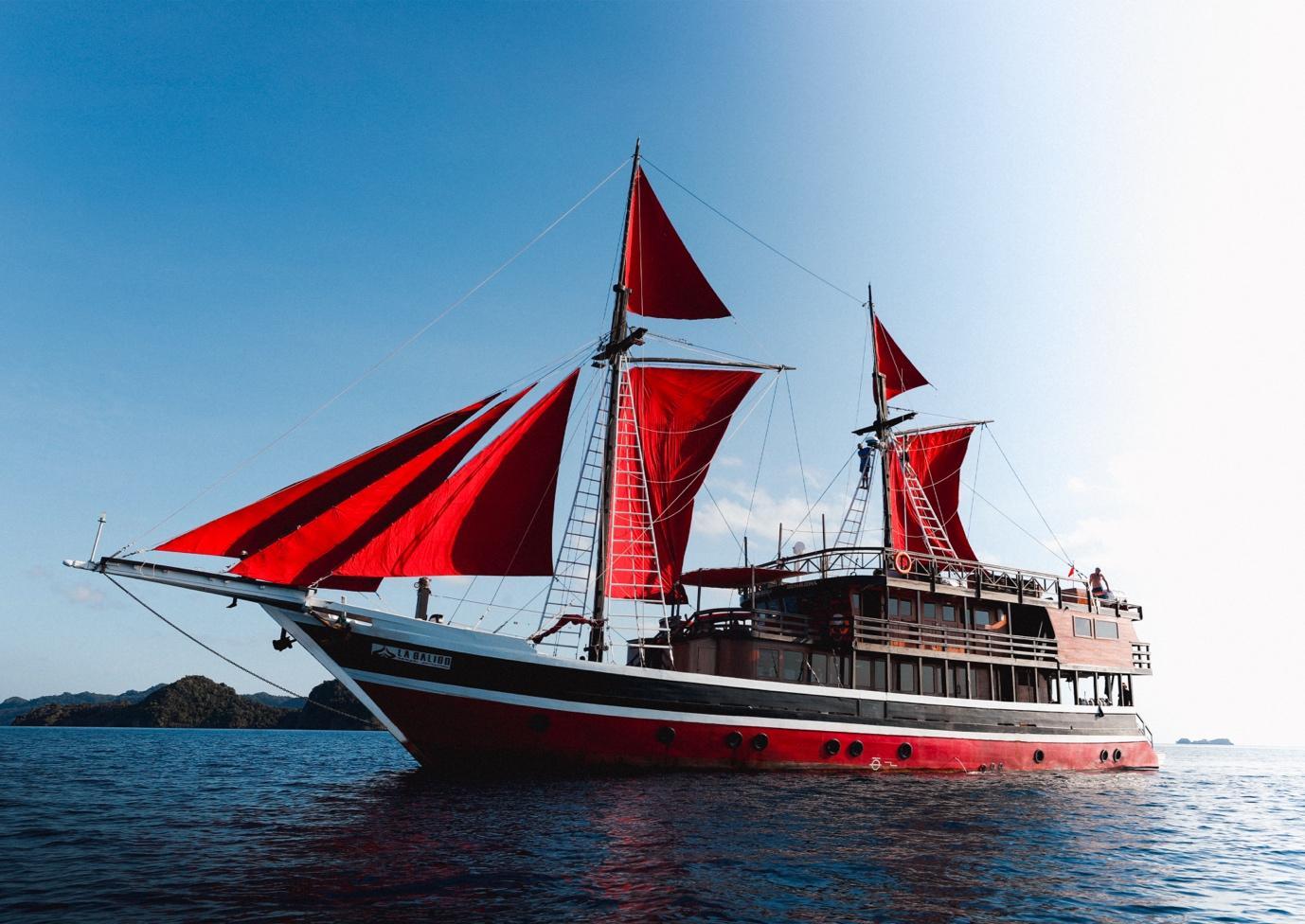
La Galigo is known as one of the best liveaboard diving boats in Raja Ampat Indonesia, and it offers trips to well-known diving destinations such as Komodo and Raja Ampat. The Coral Triangle is located in Indonesia, which has the highest marine biodiversity on the planet.
La Galigo Liveaboard Diving was founded in 2015 by two avid divers who wanted to explore some of Indonesia’s pristine reefs but found that all existing scuba diving options were frequently out of their budget, and wanted to provide an affordable option for everyone to be able to explore these beautiful places.
La Galigo Liveaboard Diving in Raja Ampat & Komodo is a friends and family affair, and our liveaboard diving trips are always focused on fun, safety, guest comfortability, and are exceptional value for money. Our trip prices range from $2,160 for a six-day Komodo liveaboard diving trip to $3,375 for an eight-day Raja Ampat liveaboard diving trip. The price includes four meals a day, diving or snorkelling three to four times a day, and land tours.


